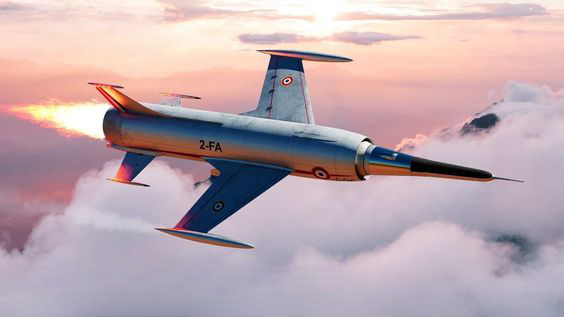The French Leduc 022: A Jet-Age Pioneer
There have been several ground-breaking aircraft in the history of aviation that have pushed the limits of technology and design. The French Leduc 022 is one such aircraft that was influential in the early days of the jet age. The Leduc 022 was an experimental plane created in the 1950s that had amazing technical and aerodynamic innovations. This page explores the history of the Leduc 022, as well as its design elements, flying qualities, and legacy.

Background and Development
Following World War II, aviation engineers all around the world were looking at fresh options for designing aircraft. The creation of jet engines was one area of great attention. At the vanguard of this movement was French engineer René Leduc, who envisioned an airplane driven by a ramjet engine. The forward speed of the aircraft is used to compress incoming air for combustion in ramjets, a form of air-breathing jet engine that lacks any moving components.
Leduc started developing the Leduc 022 with this concept in mind in the early 1950s. The aircraft’s design, which featured a delta-wing structure and a slim fuselage with a pointed nose cone, was a significant departure from customary aircraft designs. The design aims to improve high-speed performance and aerodynamic efficiency.
Design and Specifications
The Leduc 022 was an experimental, single-seat, high-speed aircraft. Its 11.4-meter-long fuselage was built out of lightweight materials like aluminum. With a sweep angle of 60 degrees, the delta wing offered superb maneuverability at high speeds.
The Leduc 022’s usage of a retractable air inlet placed underneath the fuselage was one of its primary design features. The ramjet engine could catch and compress incoming air while in flight thanks to its ground-breaking innovation. The aircraft had no conventional propulsion systems, depending entirely on the power of the ramjet engine.
Flight Characteristics and Difficulties
On October 19, 1947, test pilot Paul Boudier took the Leduc 022 for its first flight. The first flights exposed a number of problems with the ramjet engine technology. The aircraft had to be launched from a carrier aircraft, such as a modified bomber, in order to attain the required speeds for engine ignition because the engine had a restricted power output at low speeds.
The Leduc 022 had remarkable speed and climb capability once in the air. With a peak speed of 1,005 km/h (624 mph), it broke multiple records for ramjet-powered aircraft. However, the aircraft had trouble managing at low speeds and experiencing engine flameouts. Additionally, the absence of a conventional propulsion system made takeoff and landing procedures quite difficult.
Legacy and Influence
Despite several drawbacks, the Leduc 022 was a significant step forward for aeronautical technology. Future advancements in supersonic flying were made possible by the insightful information it supplied on the performance and difficulties of ramjet engines. The Leduc 022 program’s data and expertise were used to help develop future French aircraft, including the Sud Aviation Caravelle, a successful passenger jet.
The Leduc 022’s delta-wing configuration also had an impact on other aircraft designs, such as the renowned Dassault Mirage fighter series. The delta-wing shape’s benefits, including high-speed performance, maneuverability, and stability, were demonstrated by the Leduc 022.
Conclusion:
A noteworthy aircraft that marked a significant advance in aviation technology was the Leduc 022. Because of its distinctive design and cutting-edge performance capabilities, France became a pioneer in the aerospace sector, and its legacy has persisted to the present day. The Leduc 022 is a tribute to the force of creativity and the human will to push the limits of what is possible even if it was never put into production.








